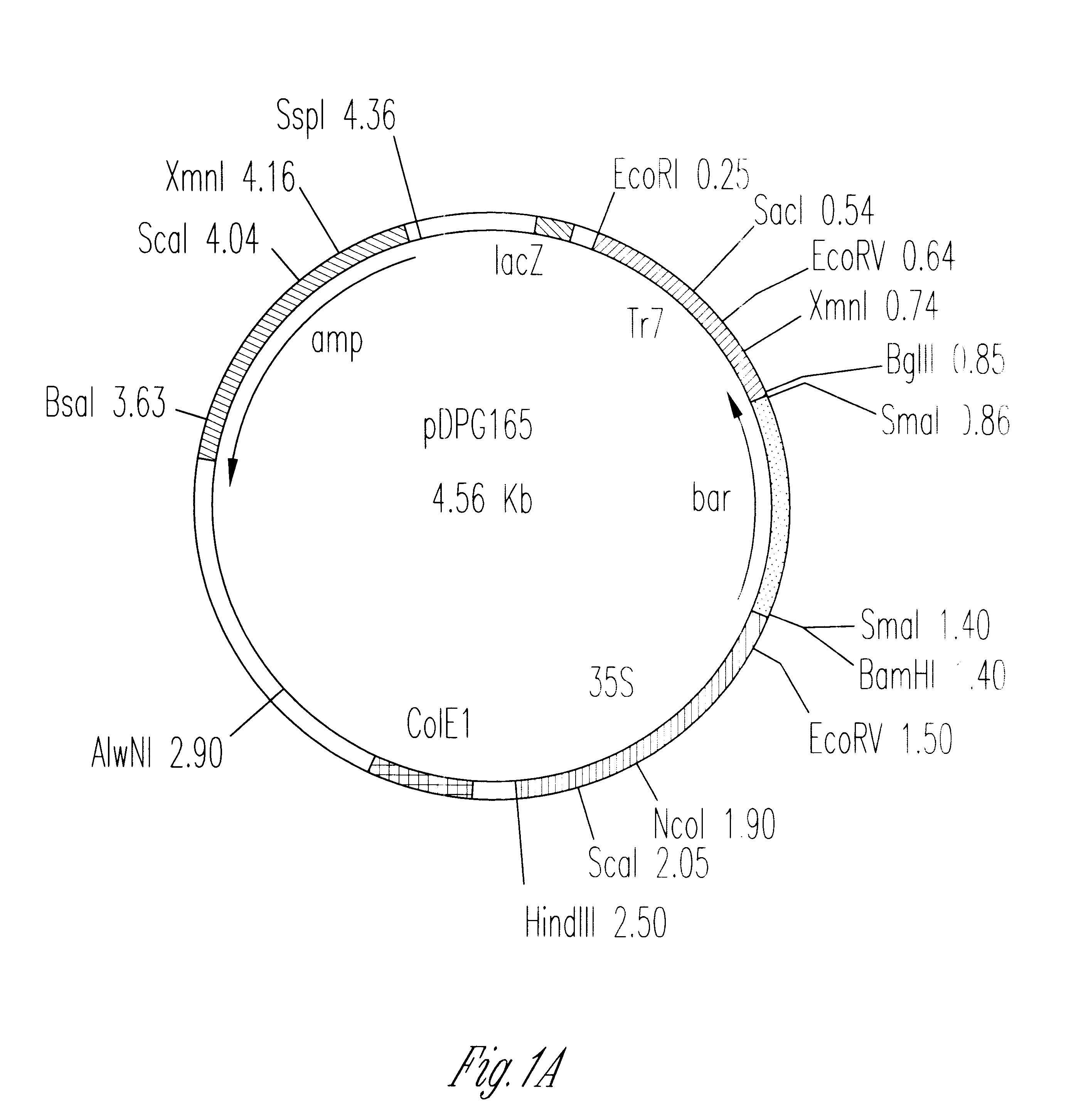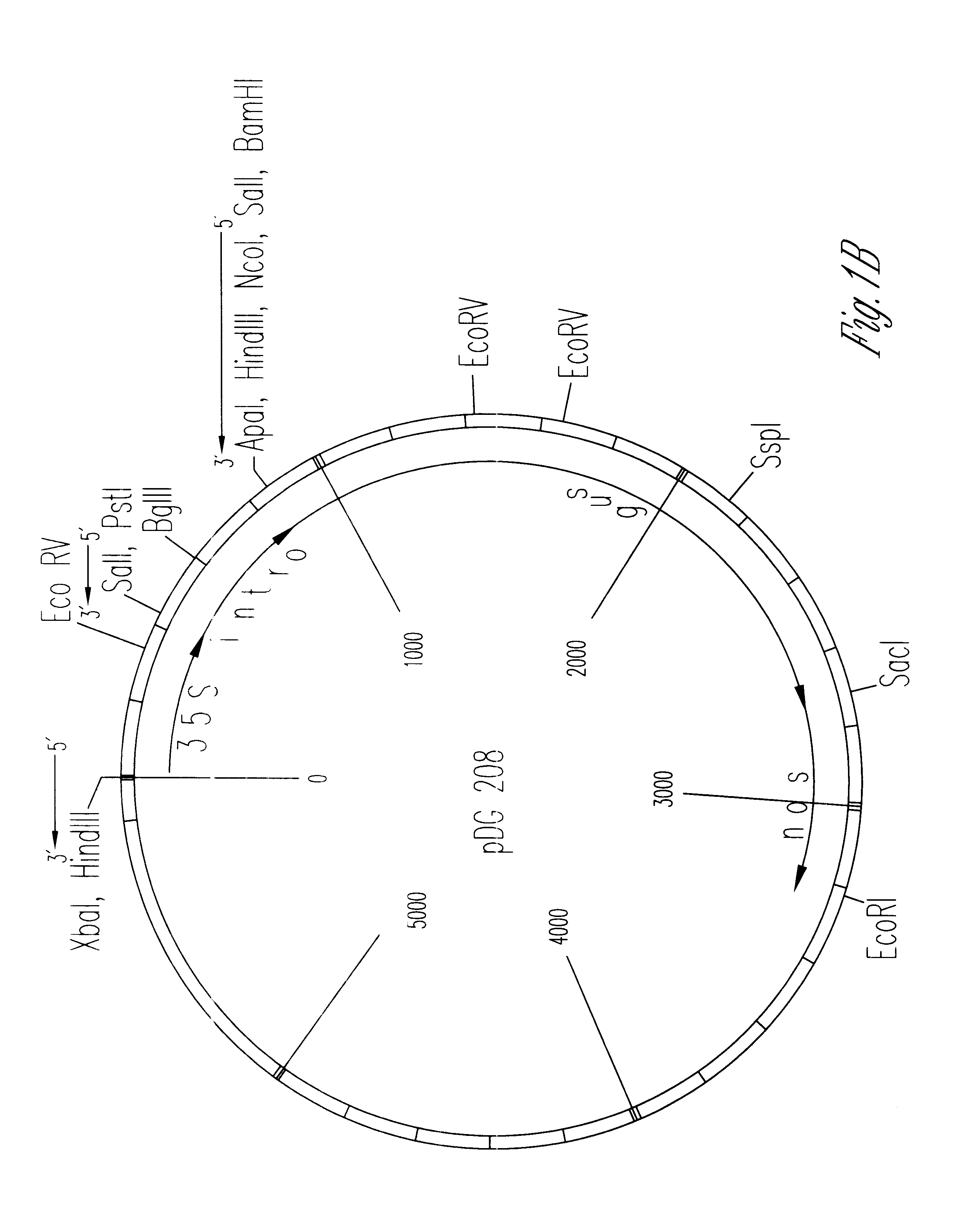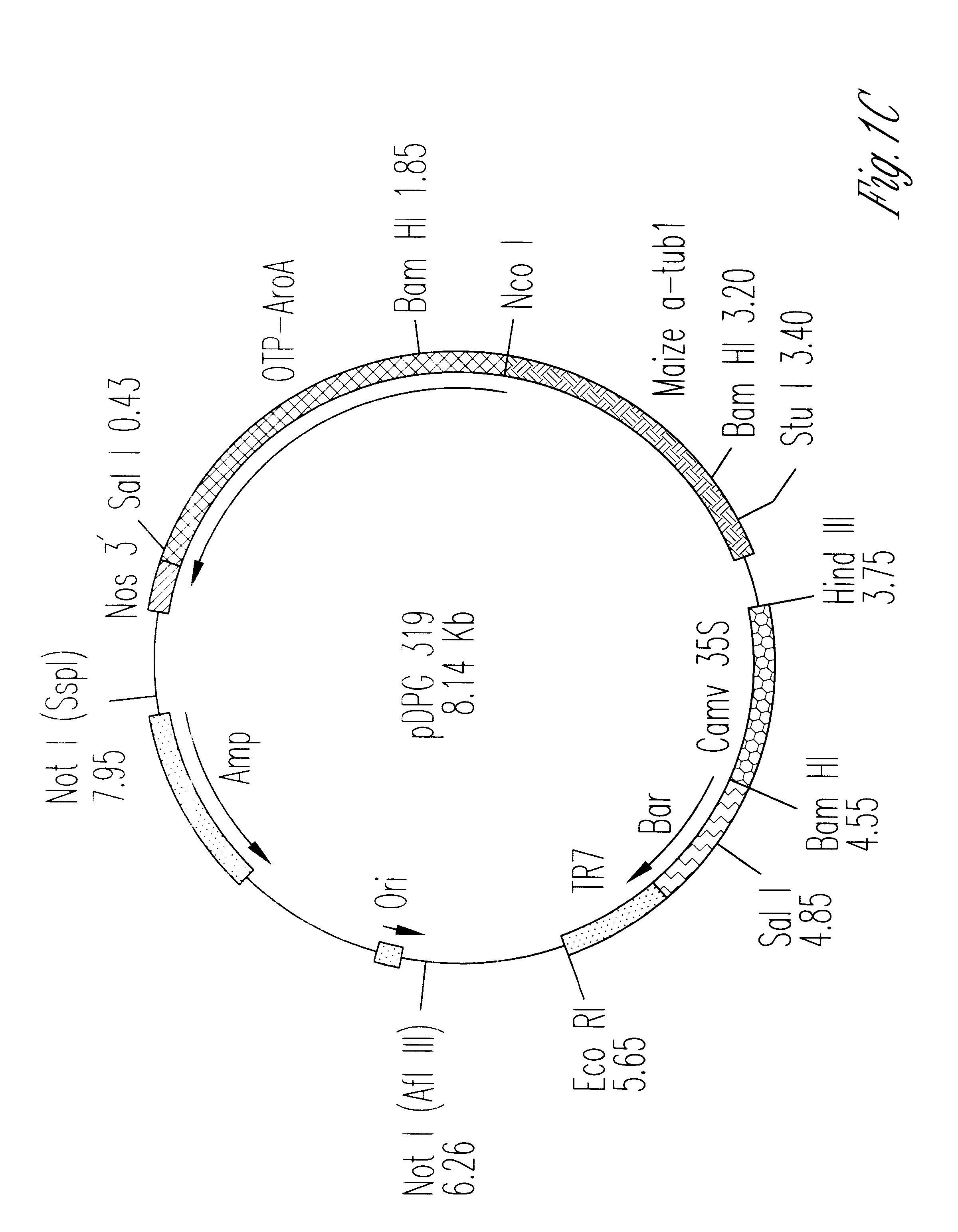Fertile transgenic maize plants containing a gene encoding the pat protein
- Summary
- Abstract
- Description
- Claims
- Application Information
AI Technical Summary
Problems solved by technology
Method used
Image
Examples
example ii
Transformation of Immature Embryos by Particle Bombardment
Immature embryos of maize (Koziel et al., 1993), barley (Wan & Lemaux, 1994), sorghum (Casas et al., 1993), wheat (Weeks et al., 1993) and rice (Christou et al., 1991) have been demonstrated to be a suitable target for production of transformed plants via microprojectile bombardment. The following example exemplifies the transformation of maize via microprojectile bombardment of immature embryos. Although the process is exemplified with the genotype HiII (Armstrong et al., 1991), the method is not limited to this genotype and has been successfully applied to other genotypes of maize including H99, PA91, A188 x B73 and various crosses of the HiII genotype to elite inbred lines.
A. Bombardment of Immature Embryos
Immature embryos (1.2 to 2.0 mm in length) were excised from surface-sterilized, greenhouse-grown ears of Hi-II 11 to 12 days post-pollination. The Hi-II genotype was developed from an A188 x B73 cross for high frequency...
example iii
Transformation by Electroporation
A. Electroporation Study EP413: Stable Transformation of Cells Using PDPG165 and pDPG208
Transformation of Zea mays via electroporation and production of fertile transgenic plants have been demonstrated by D'Halluin et al. (1992) and Laursen et al. (1994). D'Halluin et al. (1992) demonstrated production of fertile transformants of Zea mays following electroporation of maize Type I callus or immature embryo whereas Laursen et al. (1994) demonstrated transformation of maize suspension culture cells and recovery of fertile transgenic plants. The following exemplifies electroporation of maize suspension cells, but the method is equally applicable to other maize cell types including Type I callus and immature embryos and other genotypes of maize.
Maize suspension culture cells were enzyme treated and electroporated using conditions described in Krzyzek and Laursen (PCT Publication WO 92 / 12250). AT824 suspension culture cells, three days post subculture, wer...
example iv
Analysis of Integration of Exogenous DNA in Transformants and Progeny Plants
Transformed plants derived from particle bombardment of cultured cells or immature embryos or derived from electroporation are analyzed in a similar manner. Although analysis of plants derived from particle bombardment of cultured cells are disclosed herein, similar analysis could be undertaken on any transformed plant.
A. General Methods for Assays
A method to detect the presence of phosphinothricin acetyl transferase (PAT) activity is to use an in vitro enzyme reaction followed by thin layer chromatography.
Various protein extracts prepared from homogenates of potentially transformed cells, and from control cells that have neither been transformed nor exposed to bialaphos selection, were assayed by incubation with PPT and .sup.14 C-Acetyl Coenzyme A followed by thin layer chromatography. Twenty-five .mu.g of protein extract were loaded per lane. The source in lanes E1 to E11 were SC82 transformants; B13 was a...
PUM
| Property | Measurement | Unit |
|---|---|---|
| Fraction | aaaaa | aaaaa |
| Fraction | aaaaa | aaaaa |
| Fraction | aaaaa | aaaaa |
Abstract
Description
Claims
Application Information
 Login to View More
Login to View More - R&D
- Intellectual Property
- Life Sciences
- Materials
- Tech Scout
- Unparalleled Data Quality
- Higher Quality Content
- 60% Fewer Hallucinations
Browse by: Latest US Patents, China's latest patents, Technical Efficacy Thesaurus, Application Domain, Technology Topic, Popular Technical Reports.
© 2025 PatSnap. All rights reserved.Legal|Privacy policy|Modern Slavery Act Transparency Statement|Sitemap|About US| Contact US: help@patsnap.com



